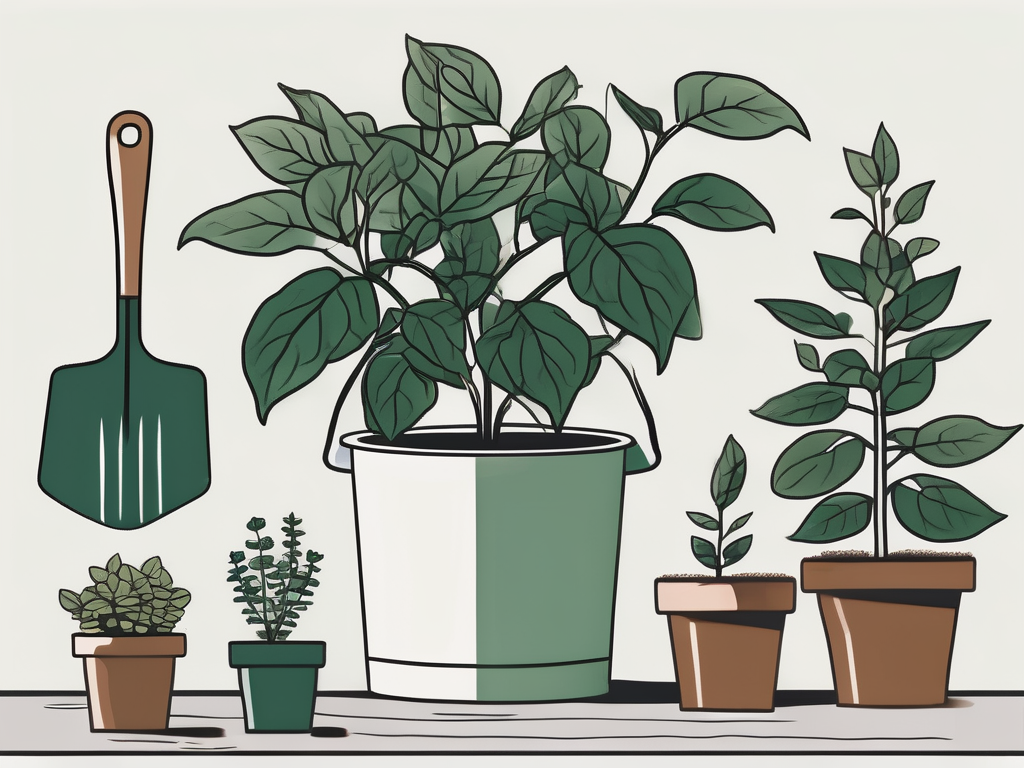
There's something truly satisfying about propagating plants, especially when you get to see new life sprouting from a little cutting. If you're a fan of Ctenanthe, you're in for a treat. These plants are not only stunning with their unique leaf patterns, but they're also relatively easy to propagate, making them a favorite among plant lovers.
In this guide, we're going to walk through the process of propagating Ctenanthe step by step. Whether you're a seasoned plant parent or just starting your green journey, you'll find helpful tips and insights to ensure success. So grab your gardening gloves, and let's get started on growing your Ctenanthe family!
Understanding Ctenanthe: The Basics
Before diving into propagation, it's helpful to get to know the plant you're working with. Ctenanthe is part of the Marantaceae family, which also includes Calatheas and Marantas. These plants are known for their striking foliage, often featuring patterns that look like they've been painted by an artist. Ctenanthe leaves can be a mix of greens, silvers, and sometimes even purples, making them a standout addition to any indoor garden.
One of the cool things about Ctenanthe is their ability to "move." Known as the prayer plant movement, their leaves fold up at night and open during the day. This movement is part of their natural circadian rhythm and adds a bit of dynamic beauty to any room.
Understanding a bit about Ctenanthe's natural habitat helps in replicating conditions for successful propagation. They're native to the tropical rainforests of Central and South America, so they thrive in warm, humid environments. Keeping these conditions in mind is key when you're looking to propagate Ctenanthe effectively.
Choosing the Right Time for Propagation
Timing can play a significant role in how successful your propagation efforts will be. Generally, the best time to propagate Ctenanthe is during the growing season, which is typically spring and summer. During these months, the plant is actively growing, and cuttings are more likely to root successfully.
While you can technically propagate Ctenanthe at any time of the year, doing so during the colder months might slow down the rooting process. The plant's growth naturally slows in the fall and winter, which means cuttings might take longer to establish themselves. So, if you're looking for quicker results, stick to the warmer months.
Another key factor is the health of your parent plant. Always ensure that the plant you're taking cuttings from is healthy and free from pests or diseases. This not only increases the chances of successful propagation but also ensures that the new plants will be strong and vigorous.
Selecting the Perfect Cutting
Choosing the right cutting is crucial for successful propagation. You'll want to select a section of the plant that is healthy and has a good amount of growth. Ideally, look for a stem that's about 4-6 inches long and has at least a few leaves attached.
When taking a cutting, use a clean, sharp pair of scissors or pruning shears. This minimizes any damage to the plant and helps prevent the spread of disease. Make your cut just below a node, which is where the leaf attaches to the stem. This is important because nodes are the sites where new roots will develop.
It's also a good idea to remove any leaves from the lower part of the stem. This ensures they won't sit in water and rot, which could harm the cutting. You want to keep the top leaves intact, as they'll help the cutting continue to photosynthesize and grow.
Preparing Your Cutting for Success
Once you have your cutting, there are a few steps to prepare it for rooting. One optional step is to dip the cut end into rooting hormone. Rooting hormone can encourage faster root development, but it's not necessary for success. If you choose to use it, just dip the end of the cutting into the powder, shaking off any excess.
Next, decide whether you'll root your cutting in water or soil. Each method has its pros and cons. Water propagation allows you to watch the roots develop, which can be quite satisfying. However, transitioning the cutting to soil later on can sometimes be tricky. On the other hand, soil propagation requires a bit more patience since you won't see the roots forming, but it often leads to a smoother transition to a potted plant.
If you're going for water propagation, place the cutting in a jar of water, ensuring that the nodes are submerged but the leaves are not. Change the water every few days to keep it fresh and prevent bacteria growth. For soil propagation, plant the cutting in a pot filled with well-draining potting mix, and water lightly.
Creating the Ideal Environment
Now that your cutting is ready, it's time to create the perfect environment for it to thrive. Since Ctenanthe is a tropical plant, your cutting will need warmth and humidity to root successfully.
Place your cutting in a warm spot with bright, indirect light. Direct sunlight can be too harsh and might scorch the leaves, so aim for a location that receives filtered light. A north or east-facing window is often ideal.
Humidity is another critical factor. If you live in a dryer climate, consider placing your cutting on a humidity tray or using a small humidifier nearby. You can also cover the cutting with a plastic bag or a clear container to create a mini greenhouse effect, just make sure there's enough airflow to prevent mold and mildew.
Keep an eye on the temperature as well. Ctenanthe cuttings prefer a warm environment, ideally between 65-75°F (18-24°C). If your home tends to be cooler, consider using a heat mat to provide a bit of extra warmth.
Monitoring and Maintaining Your Cutting
While it might be tempting to check on your cutting every day, it's essential to give it some time to develop roots. Depending on the conditions, you might start to see root development in as little as two weeks, but it can take up to a month or longer.
During this time, continue to monitor the environment. Ensure the cutting isn't drying out if it's in soil, and keep the water fresh if it's in a jar. If you're using a plastic covering to boost humidity, check for condensation and adjust as needed to prevent mold.
Be patient and resist the urge to move the cutting around too much. Stability is crucial for root development, and frequent disturbance can slow the process. Once you see roots that are about an inch long, your cutting is ready to be potted up if it was started in water.
Transitioning to a Pot
If you started your cutting in water, the transition to soil is the next step. This process can be a bit nerve-wracking, but with a gentle touch, your cutting should adjust just fine.
Choose a pot with good drainage and fill it with fresh, well-draining potting mix. Gently remove the cutting from the water and plant it in the soil, being careful not to damage the delicate new roots. Firm the soil around the cutting to provide support.
Water the cutting lightly, ensuring the soil is moist but not soggy. Continue to provide bright, indirect light and maintain humidity levels as your new plant settles into its pot. Over the next few weeks, the cutting should start to establish itself in the soil, and you'll see new growth appear.
Long-Term Care for Ctenanthe
Congratulations! You've successfully propagated a Ctenanthe. Now, it's all about keeping your new plant healthy and thriving. This means continuing to provide the right conditions for growth.
Keep your Ctenanthe in a warm, humid environment with bright, indirect light. Water it regularly, but be careful not to overwater. Ctenanthe prefers to dry out slightly between waterings, so check the soil moisture before adding more water.
Feeding your plant with a balanced, water-soluble fertilizer during the growing season can also encourage healthy growth. Just be sure to follow the instructions on the package and avoid fertilizing during the dormant months of fall and winter.
Lastly, keep an eye out for any signs of pests or diseases, such as yellowing leaves or wilting. Address any issues promptly to keep your Ctenanthe looking its best.
Final Thoughts
Propagating Ctenanthe can be a rewarding process, allowing you to expand your plant collection and share cuttings with friends. By following the steps outlined above, you should be well on your way to growing healthy new plants.
At Cafe Planta, we're passionate about helping you care for your plants. We offer a variety of houseplants and plant care accessories to suit your needs. If you have any questions, feel free to email us or DM us on Instagram. We're excited to be part of your plant journey and help you create a beautiful, thriving space.












